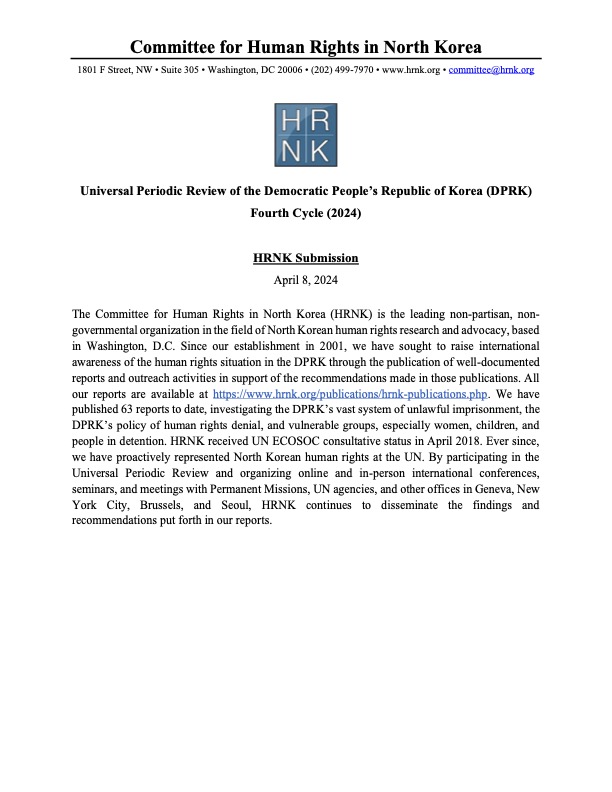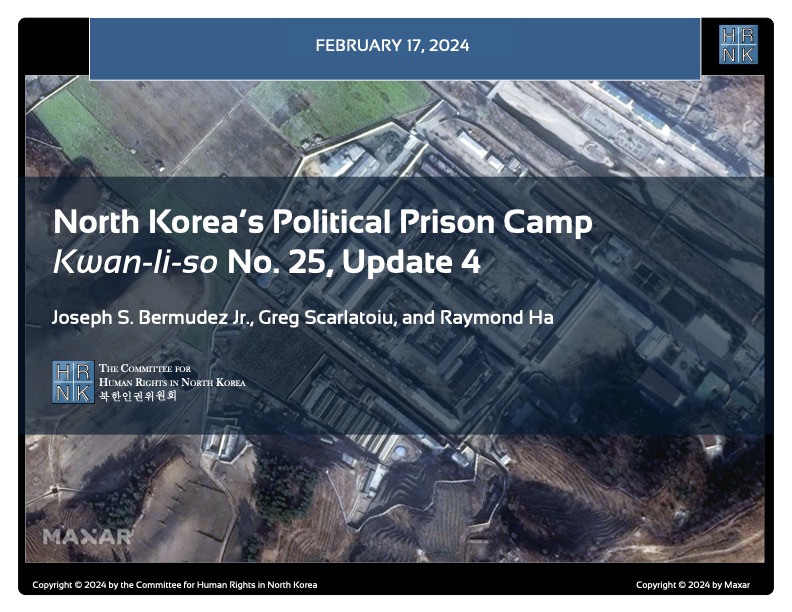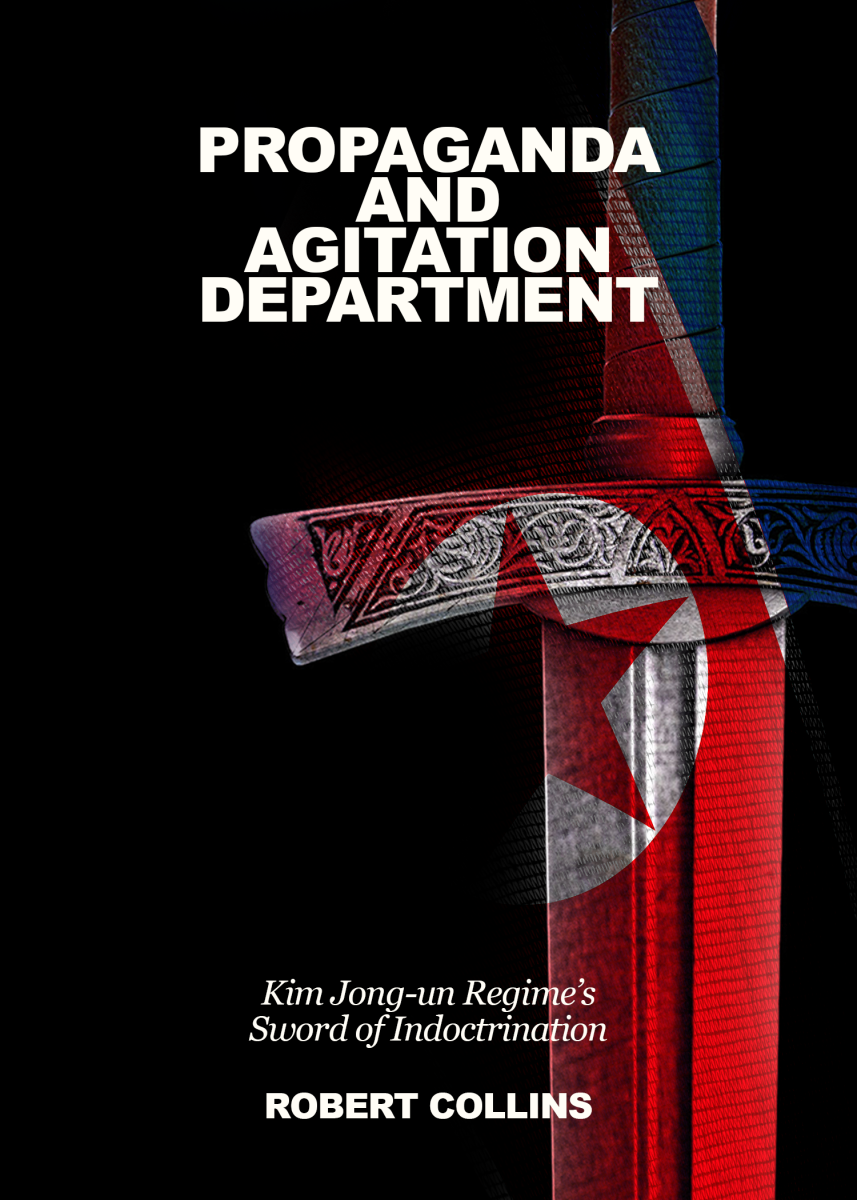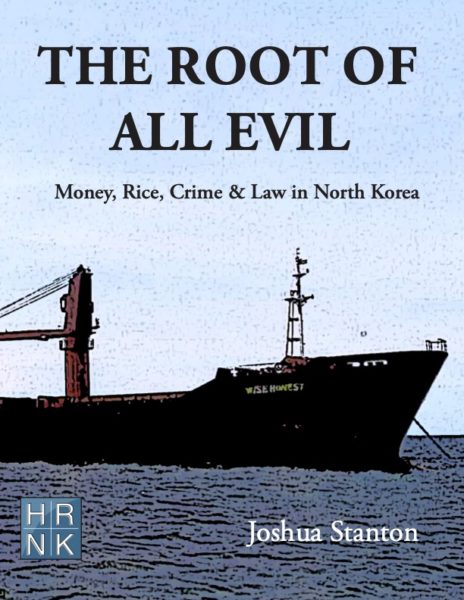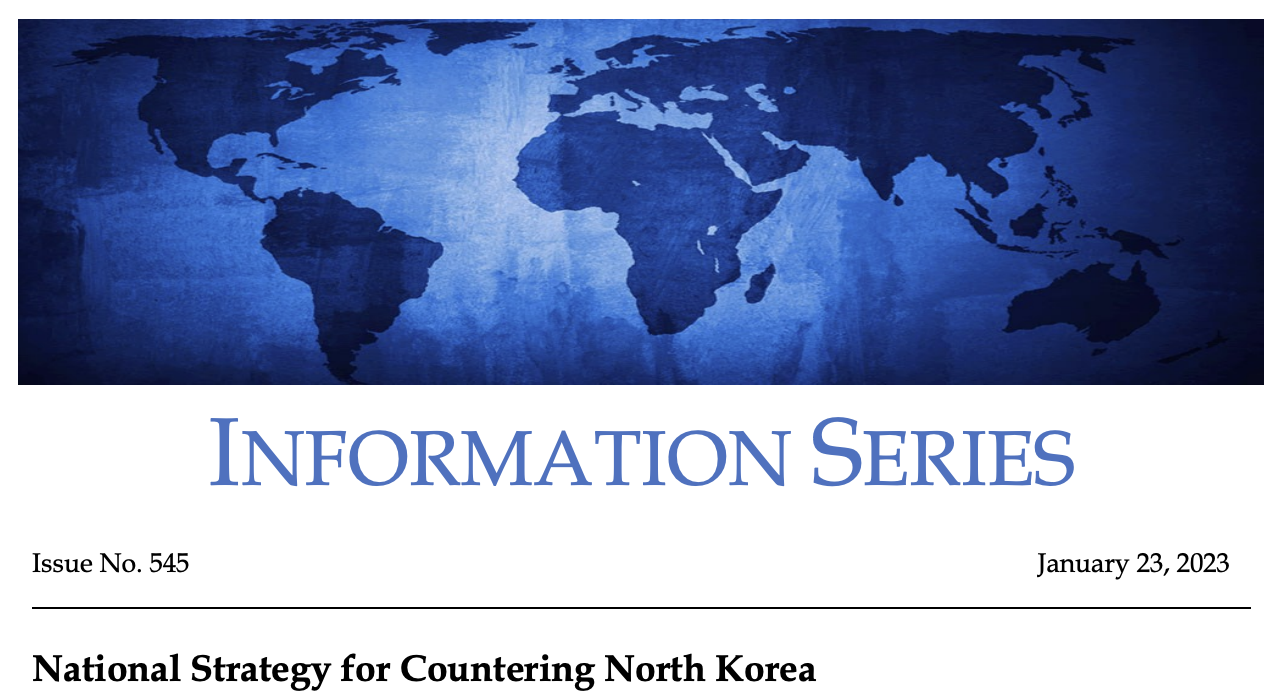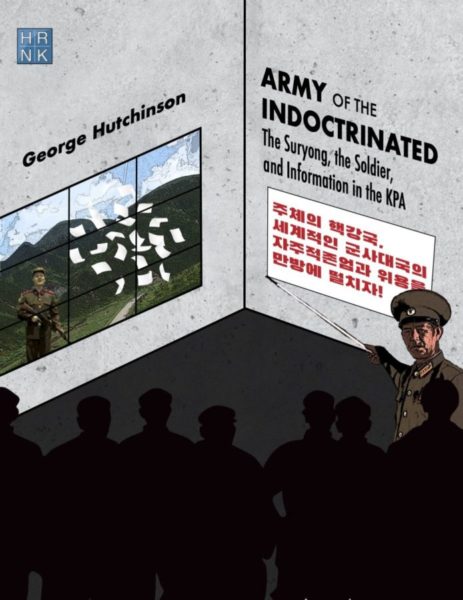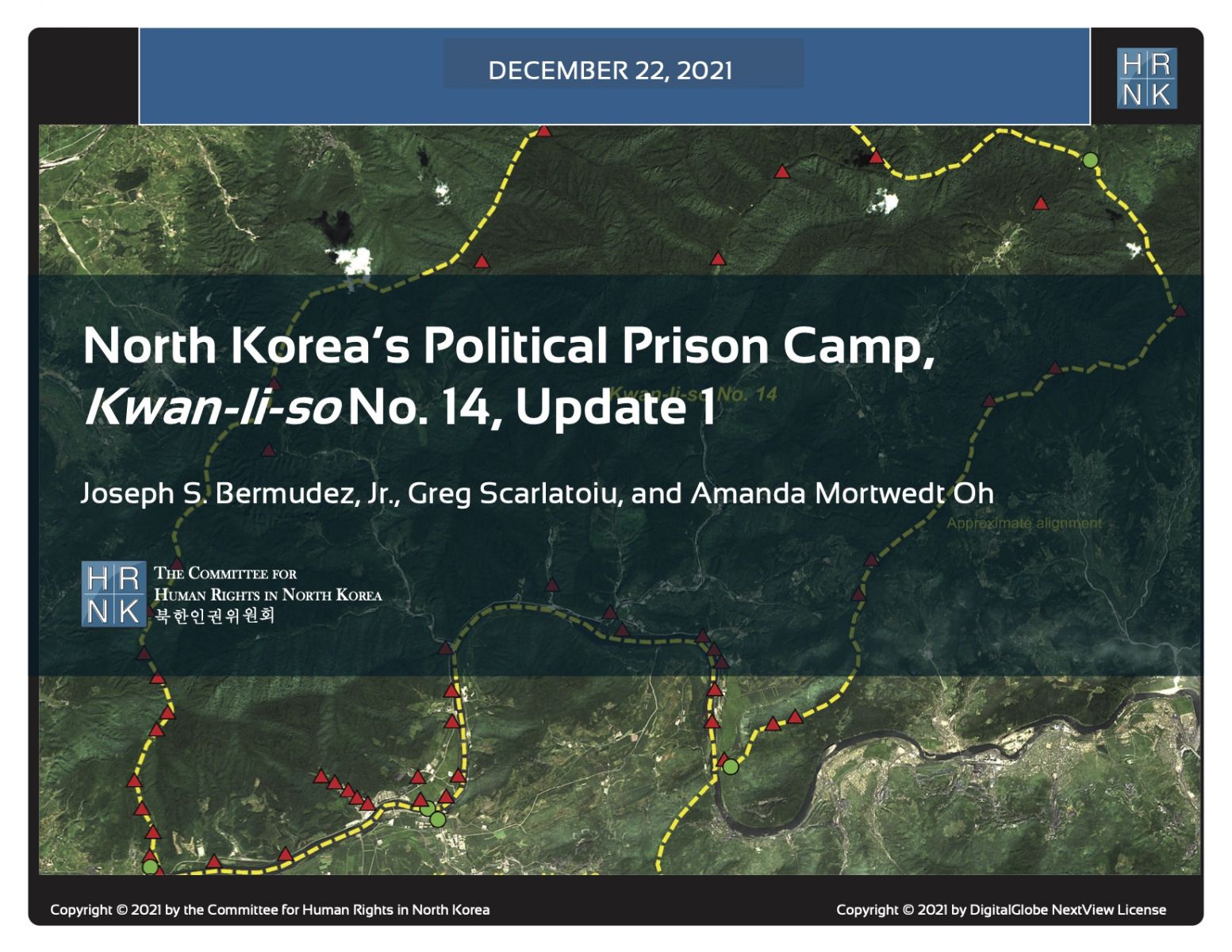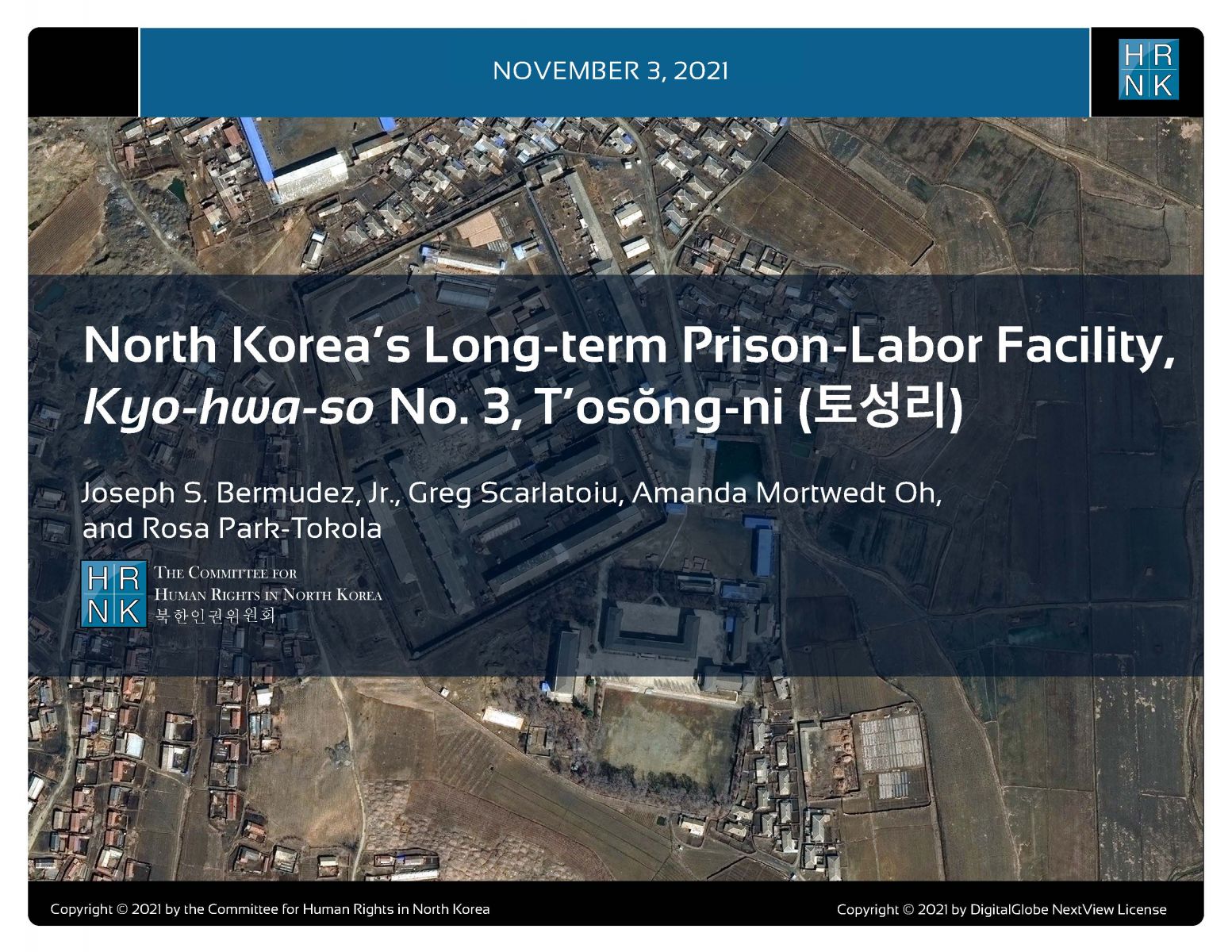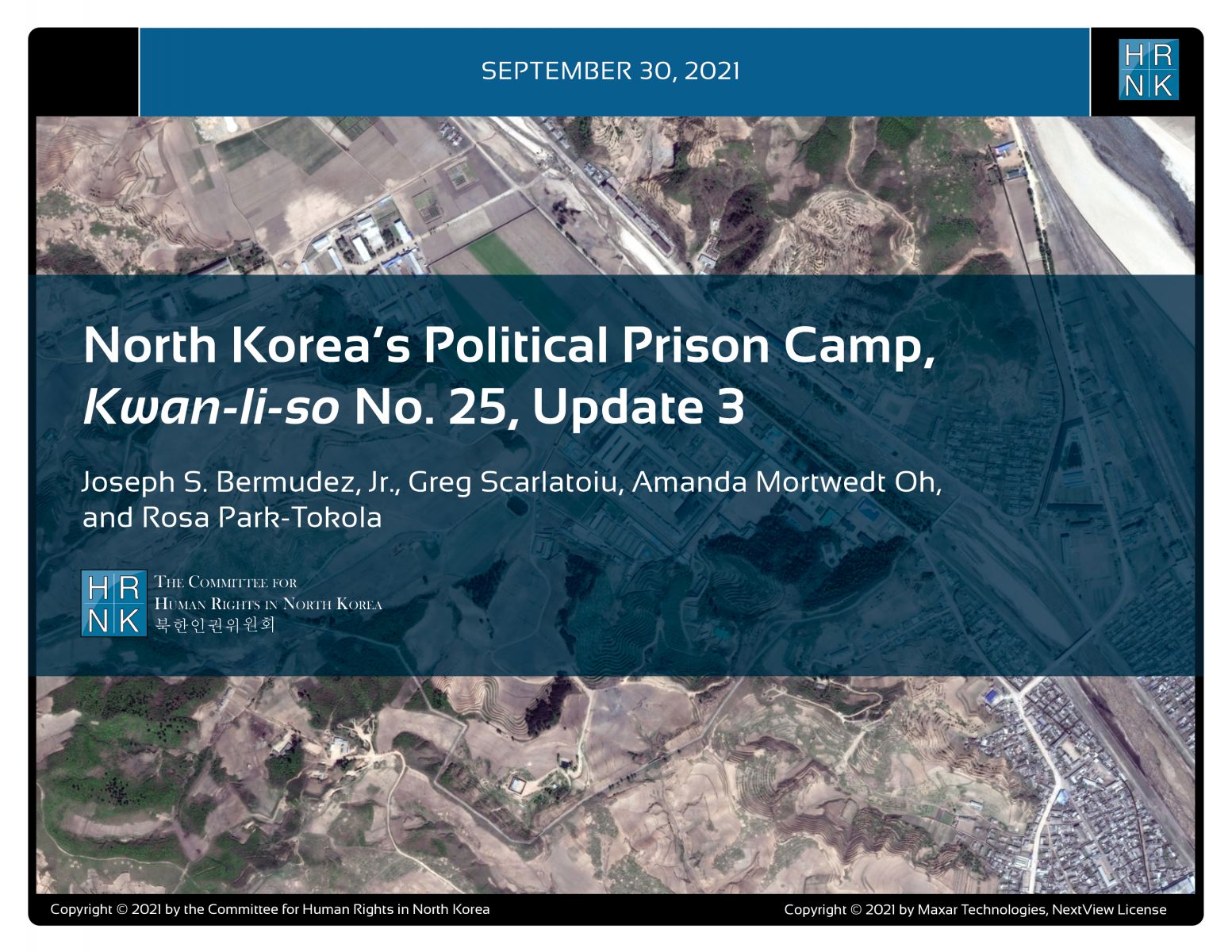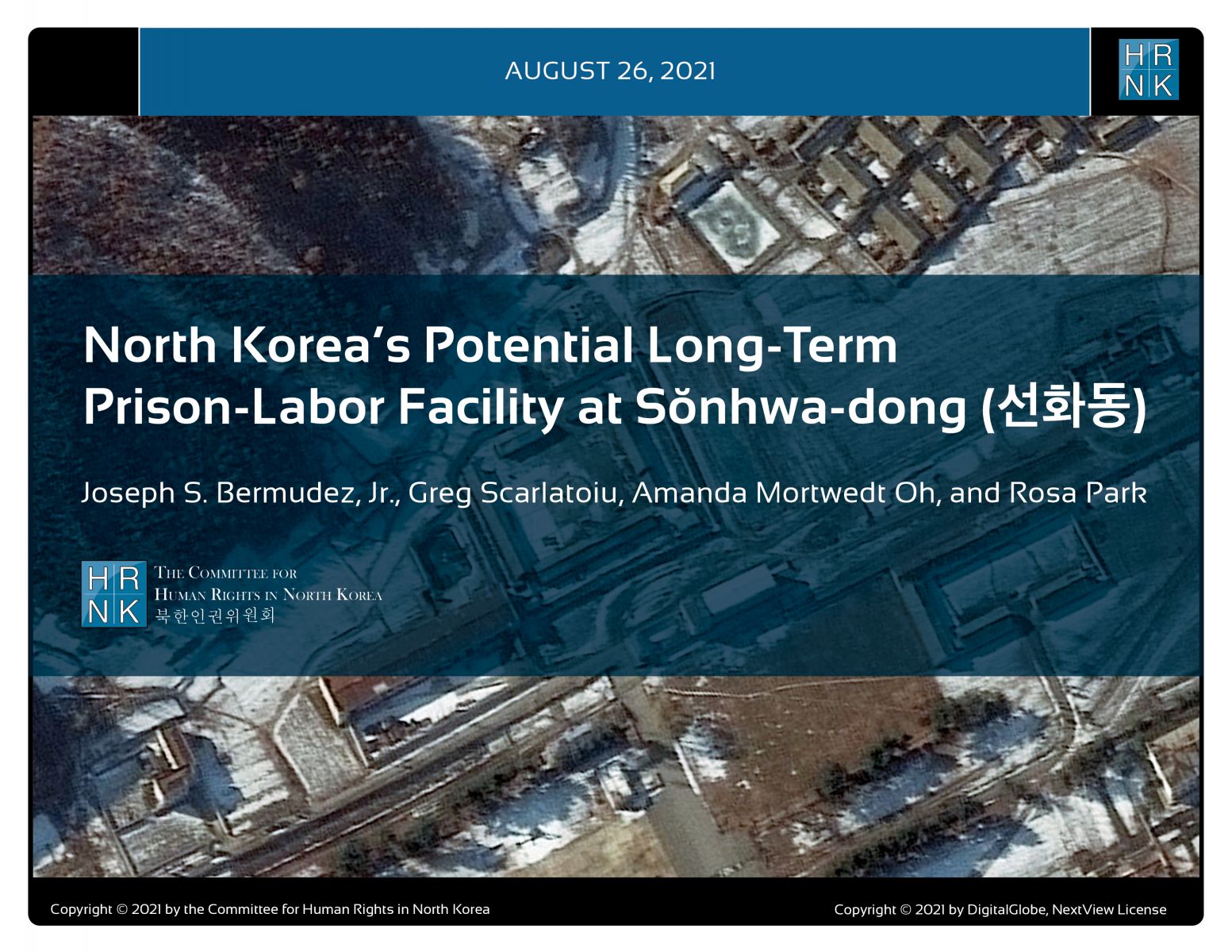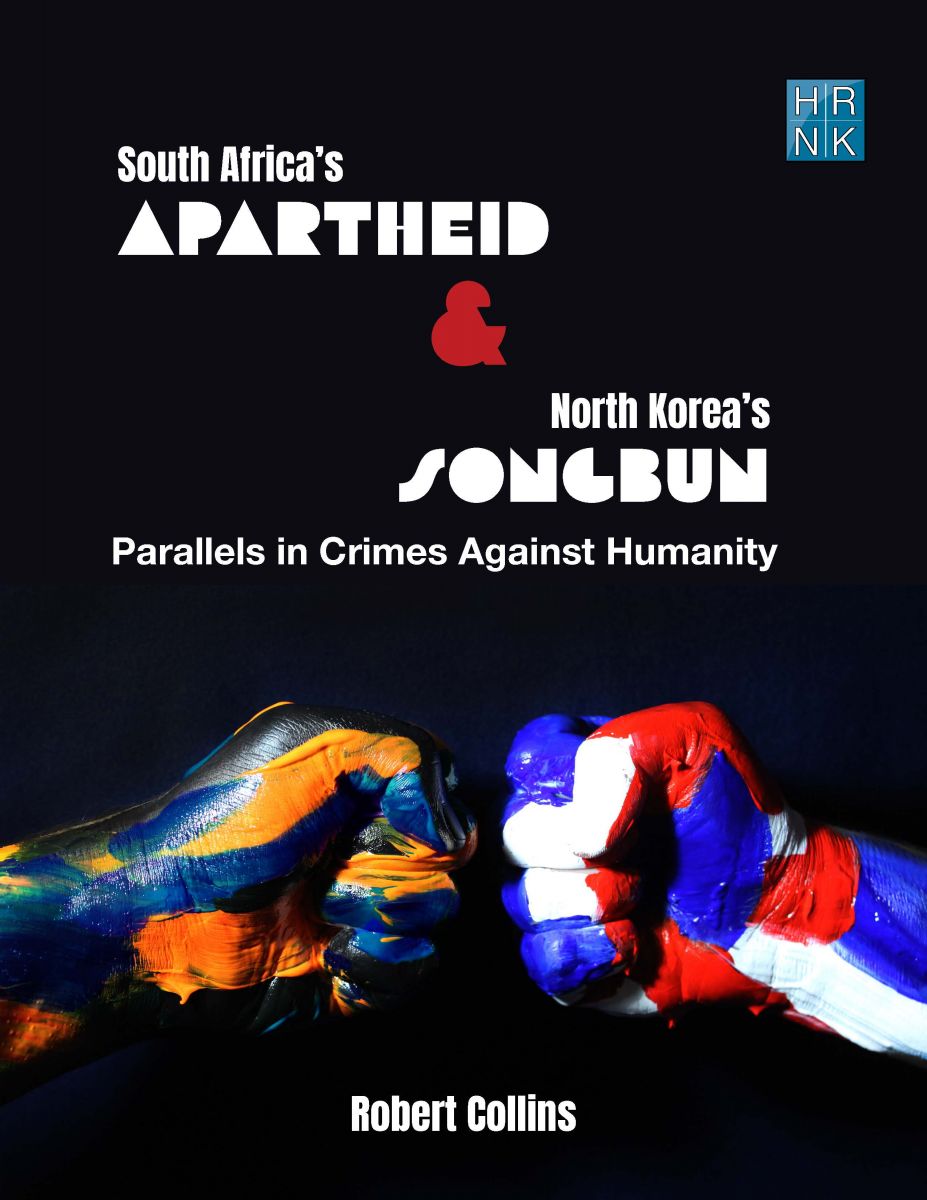BASED ON SATELLITE IMAGERY ANALYSIS AND FORMER PRISONER TESTIMONY, NEW HRNK REPORT HIGHLIGHTS CHANGES AT NORTH KOREAN DETENTION FACILITY. 3D MODEL OF THE CAMP RELEASED IN CONJUNCTION WITH THE REPORT ROLLOUT. THE BONE-BREAKING, LIFE-CRUSHING, RELENTLESS INHUMANITY OF NORTH KOREA’S DETENTION SYSTEM ENDURES.
THE REPORT IS AVAILABLE AS A PDF FILE THROUGH HRNK’S WEBSITE:
https://www.hrnk.org/uploads/pdfs/Bermudez_KHS8_FINAL_2021_10_04.pdf
WASHINGTON, JULY 22, 2021. The Committee for Human Rights in North Korea (HRNK) releases today an update on the Pokchŏng-ni detention facility in North Korea. This report is the latest installment in a comprehensive long-term project undertaken by HRNK author and Senior Adviser Joseph S. Bermudez, Jr. to use satellite imagery and former prisoner interviews to shed light on human suffering in North Korea by monitoring activity at prison facilities.
This study expands upon HRNK’s May 29, 2019 report covering the detention facility at Pokchŏng-ni (복청리, 39.001730 126.055616). It also adds information about two recently identified detention facilities—Kŏndal-gol 1 (곤달골 1, 39.036105 126.093164) and Kŏndal-gol 2 (곤달골 2, 39.036317 126.092953). The report places these locations within Sŭngho-guyŏk (승호구역, Sŭngho District, 39.033333, 126.000000), and puts forth the hypothesis that they are likely subcomponents of Kyo-hwa-so No. 8, Sŭngho-ri (승호리).
As noted in our earlier report, former prisoner testimony, open-source reports, and media sources describe several detention activities in the general area as the Pokchŏng-ni facility and identify them all with some variation of the Sŭngho-ri designation, indicating their likely association with each other and their location within the Sŭngho District.
Sŭngho-ri Kyo-hwa-so No. 8 is located approximately 25 kilometers east of the capital city of P’yŏngyang and consists of a small number of dispersed detention facilities, including this Pokchŏng -ni Detention Facility. This kyo-hwa-so is reported to be subordinate to the Prisons Bureau (also called the Correctional Education Bureau) of the Ministry of Social Security.
In 2014, UN Commission of Inquiry (UN COI) Chair Justice Michael Kirby stated that, “Although these labor camps might be described as ‘ordinary prisons,’ there is nothing ‘ordinary’ in the treatment of those incarcerated there.”
Recalling the horror his father witnessed while interviewing victims of the Nazi concentration camps liberated toward the end of World War II and chasing down the perpetrators of genocide, author Joseph S. Bermudez, Jr. opines: “The United Nations and all international organizations or civil society organizations operating near Sŭngho-ri Kyo-hwa-so No. 8 should consider the vulnerability of prisoners inside this facility and incorporate a Human Rights up Front approach when delivering humanitarian aid to North Koreans in need. Prisoners inside this and other detention facilities deserve attention as one of the most vulnerable populations in North Korea.” Bermudez also expressed hope that “HRNK’s satellite imagery documentation project will be an effective tool employed in a future transitional justice process in North Korea.”
HRNK Executive Director Greg Scarlatoiu underlines that “while the UN COI report amounted to a preliminary investigation, the work of Mr. Bermudez has been critical in maintaining the momentum created by the UN COI in February 2014.” According to Scarlatoiu, “cross-checking satellite imagery analysis with escapee testimony to create baseline reports of North Korean detention facilities and updating them periodically certifies that, while changes occur at these facilities, the bone-breaking, life-crushing, relentless inhumanity of North Korea’s detention system has persisted for over seven decades.”
Analysis of high-resolution satellite imagery of the Sŭngho-ri Kyo-hwa-so No. 8’s known detention facilities and their environs collected between 2017 and 2020 indicates that the Pokchŏng-ni facility is an operational prison facility. By North Korean standards, this facility is mature and well maintained. The facility has undergone minor infrastructure changes since 2017. These changes are typical of what has been observed at other kyo-hwa-so throughout North Korea. Perimeter walls and gates remain well maintained and in good repair. Guard positions are well positioned to provide overlapping fields-of-view of the prison and are well maintained and in good repair. The grounds and buildings of the prisoner housing and work areas appear to be moderately well maintained and in a moderate state of repair.
It is currently impossible to accurately estimate the prisoner population at Sŭngho-ri Kyo-hwa-so No. 8 or its subordinate Prisons Nos. 2 and 3 within the Pokchŏng-ni facility or at the Kŏndal-gol 1 and Kŏndal-gol 2 facilities. A former prisoner estimated that during the early 2000s, the Pokchŏng-ni facility detained approximately 1,500-1,600 prisoners (about 550 female and 1,000 male prisoners). This estimate is well within the capacity of the physical structures observed at that time. The subsequent reorganization and expansion of the facility during 2010–2015 suggest that an even larger prisoner population may now be detained. No information is available concerning the prisoner population at Kŏndal-gol 1 or Kŏndal-gol 2.
Having examined former prisoner testimony, HRNK Human Rights Attorney Amanda Mortwedt Oh states that “additional investigation into North Korea’s supply chain and its use of prison labor must be conducted in light of reports that prisoners at Kyo-hwa-so No. 8 are being forced to affix eyelashes to dolls for export to China.”
A 3D model of the camp by Nathan J. Hunt will also be released in conjunction with the report rollout. Mortwedt Oh points out that “this is the first time a North Korean prison camp has been modeled, as far as I am aware. Our 3D modeling further illuminates the harsh reality of life inside a North Korean prison. Our intent with prison camp models is to strengthen our understanding of the North’s prison system, where crimes against humanity are being committed and advocate for improved prison conditions.”
HRNK Director of Programs and Editor Rosa Park highlights that “tragically, there is an ongoing need for the international community to keep a close eye on these changes in North Korea’s detention facilities. We can understand the detention facilities better by keeping sustained track of them overtime. We have learned so much more about North Korea’s Long-term Prison-Labor Facility, Kyo-hwa-so No. 8. Sŭngho-ri with new prisoner testimony, analysis of new imagery, and technological advancements allowing for 3D modeling. The Kim regime cannot credibly deny the existence of its systematically abusive penal detention facilities in North Korea. This report, the latest addition to HRNK’s satellite imagery database, will be essential in future accountability measures to hold the Kim regime responsible for crimes against humanity.”
As HRNK rolls out our latest report, we call on North Korea to abide by the United Nations Standard Minimum Rules for the Treatment of Prisoners (the Nelson Mandela Rules) and the United Nations Rules for the Treatment of Female Prisoners and Non-custodial Measures for Women Offenders (the Bangkok Rules).
HRNK requests that North Korea “[g]rant immediate, free and unimpeded access to international humanitarian organizations to provide assistance to the most vulnerable groups, including prisoners” as per Ireland’s May 2019 Universal Periodic Review recommendation, which North Korea supported.
RELEASE DETAILS
The report rollout and presentation by Joseph S. Bermudez Jr. will be held via Zoom virtual conference, from 11:00 a.m. to 12:00 p.m. Eastern, on Thursday, July 22, 2021. HRNK Executive Director Greg Scarlatoiu will moderate.
If you are unable to participate, a video recording will be made available on HRNK’s YouTube channel after the event.
A prison camp walk-through video is available on HRNK’s YouTube channel at https://youtu.be/7FXskKo_y4c.
An interactive 3D model of the Pokchong-ni Detention Facility is available on HRNK’s website at https://www.hrnk.org/camp/HRNKMainMapFrontend.html (desktop users only).
The report release is ON-THE-RECORD. For media inquiries, contact Greg Scarlatoiu at [email protected].
HRNK was founded in 2001 as a nonprofit research organization dedicated to documenting human rights conditions in the Democratic People’s Republic of Korea (DPRK), as North Korea is formally known. Visit www.hrnk.org to find out more.
In this submission, HRNK focuses its attention on the following issues in the DPRK:
- The status of the system of detention facilities, where a multitude of human rights violations are ongoing.
- The post-COVID human security and human rights status of North Korean women, with particular attention to sexual and gender-based violence (SGBV).
- The issue of Japanese abductees and South Korean prisoners of war (POWs), abductees, and unjust detainees.
This report provides an abbreviated update to our previous reports on a long-term political prison commonly identified by former prisoners and researchers as Kwan-li-so No. 25 by providing details of activity observed during 2021–2023.
This report was originally published on Tearline at https://www.tearline.mil/public_page/prison-camp-25.
This report explains how the Kim regime organizes and implements its policy of human rights denial using the Propaganda and Agitation Department (PAD) to preserve and strengthen its monolithic system of control. The report also provides detailed background on the history of the PAD, as well as a human terrain map that details present and past PAD leadership.
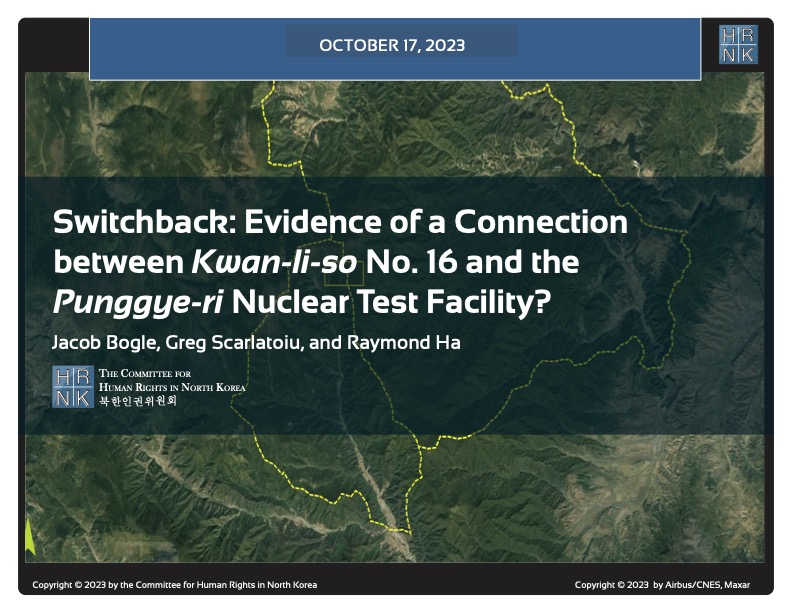
HRNK's latest satellite imagery report analyzes a 5.2 km-long switchback road, visible in commercial satellite imagery, that runs from Testing Tunnel No. 1 at North Korea's Punggye-ri nuclear test facility to the perimeter of Kwan-li-so (political prison camp) no. 16.
This report proposes a long-term, multilateral legal strategy, using existing United Nations resolutions and conventions, and U.S. statutes that are either codified or proposed in appended model legislation, to find, freeze, forfeit, and deposit the proceeds of the North Korean government's kleptocracy into international escrow. These funds would be available for limited, case-by-case disbursements to provide food and medical care for poor North Koreans, and--contingent upon Pyongyang's progress
For thirty years, U.S. North Korea policy have sacrificed human rights for the sake of addressing nuclear weapons. Both the North Korean nuclear and missile programs have thrived. Sidelining human rights to appease the North Korean regime is not the answer, but a fundamental flaw in U.S. policy.
(Published by the National Institute for Public Policy)
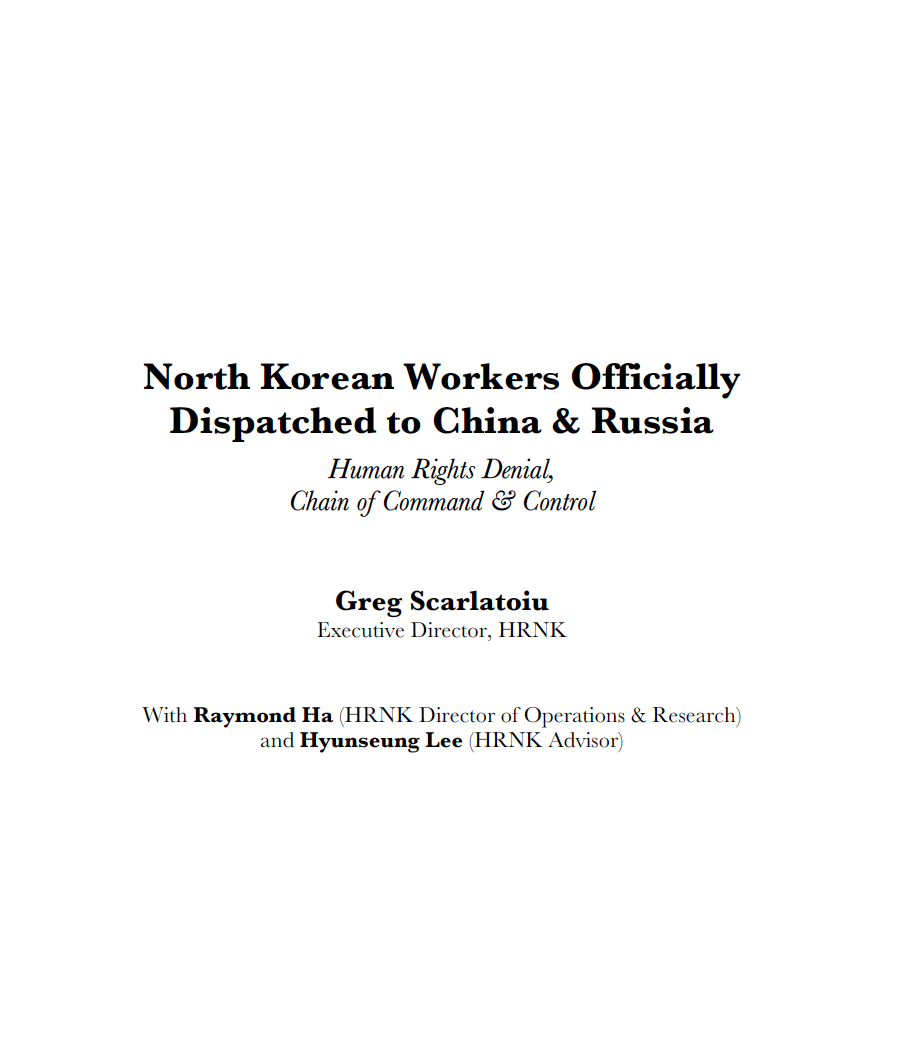
North Korea’s forced labor enterprise and its state sponsorship of human trafficking certainly continued until the onset of the COVID pandemic. HRNK has endeavored to determine if North Korean entities responsible for exporting workers to China and Russia continued their activities under COVID as well.
George Hutchinson's The Suryong, the Soldier, and Information in the KPA is the second of three building blocks of a multi-year HRNK project to examine North Korea's information environment. Hutchinson's thoroughly researched and sourced report addresses the circulation of information within the Korean People's Army (KPA). Understanding how KPA soldiers receive their information is needed to prepare information campaigns while taking into account all possible contingenc
This report is part of a comprehensive long-term project undertaken by HRNK to use satellite imagery and former prisoner interviews to shed light on human suffering in North Korea by monitoring activity at political prison facilities throughout the nation. This is the second HRNK satellite imagery report detailing activity observed during 2015 to 2021 at a prison facility commonly identified by former prisoners and researchers as “Kwan-li-so No. 14 Kaech’ŏn” (39.646810, 126.117058) and
This report is part of a comprehensive long-term project undertaken by HRNK to use satellite imagery and former prisoner interviews to shed light on human suffering in North Korea by monitoring activity at civil and political prison facilities throughout the nation. This study details activity observed during 1968–1977 and 2002–2021 at a prison facility commonly identified by former prisoners and researchers as "Kyo-hwa-so No. 3, T'osŏng-ni" and endeavors to e
This report is part of a comprehensive long-term project undertaken by HRNK to use satellite imagery and former detainee interviews to shed light on human suffering in the Democratic People’s Republic of Korea (DPRK, more commonly known as North Korea) by monitoring activity at political prison facilities throughout the nation. This report provides an abbreviated update to our previous reports on a long-term political prison commonly identified by former prisoners and researchers as Kwan-li-so<
Through satellite imagery analysis and witness testimony, HRNK has identified a previously unknown potential kyo-hwa-so long-term prison-labor facility at Sŏnhwa-dong (선화동) P’ihyŏn-gun, P’yŏngan-bukto, North Korea. While this facility appears to be operational and well maintained, further imagery analysis and witness testimony collection will be necessary in order to irrefutably confirm that Sŏnhwa-dong is a kyo-hwa-so.
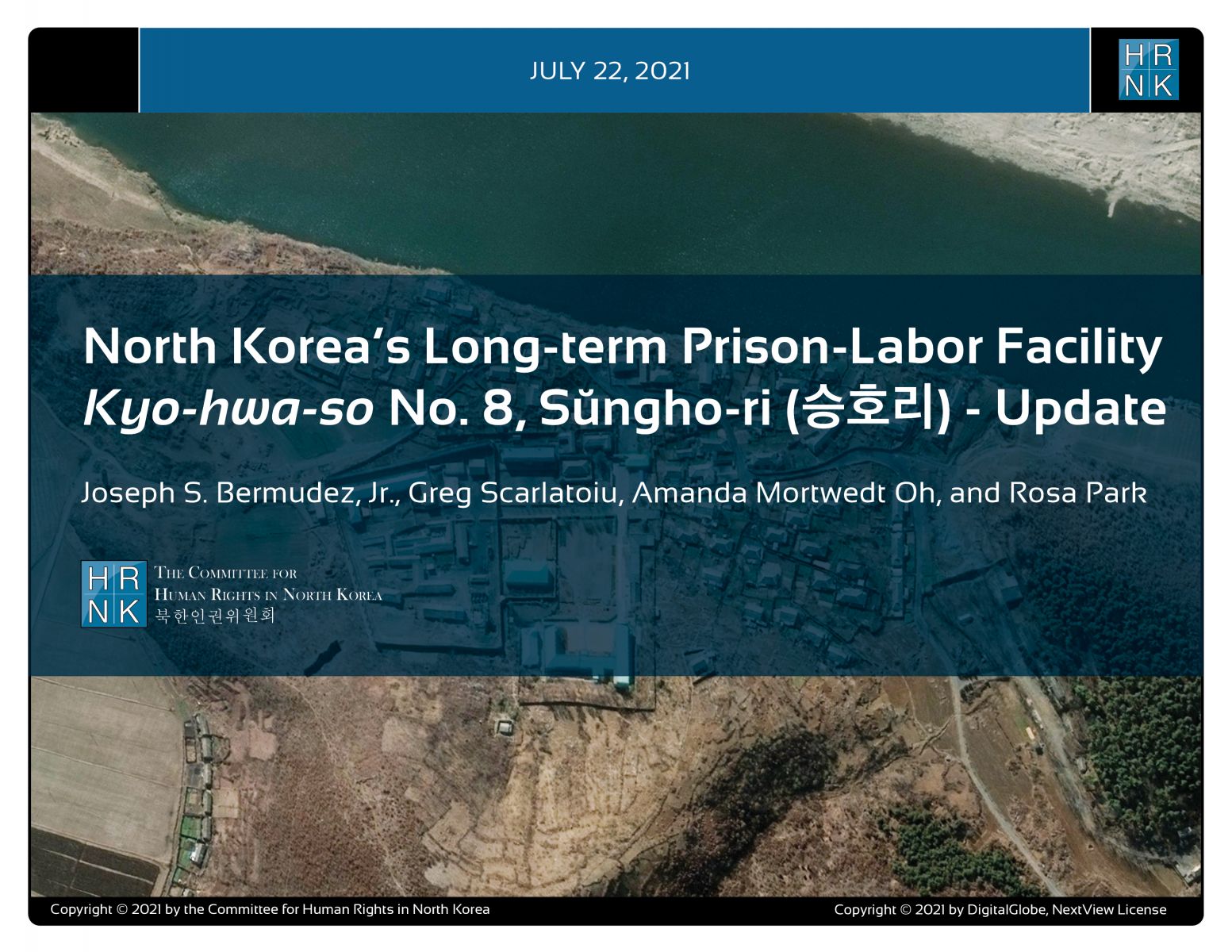
"North Korea’s Long-term Prison-Labor Facility Kyo-hwa-so No. 8, Sŭngho-ri (승호리) - Update" is the latest report under a long-term project employing satellite imagery analysis and former political prisoner testimony to shed light on human suffering in North Korea's prison camps.
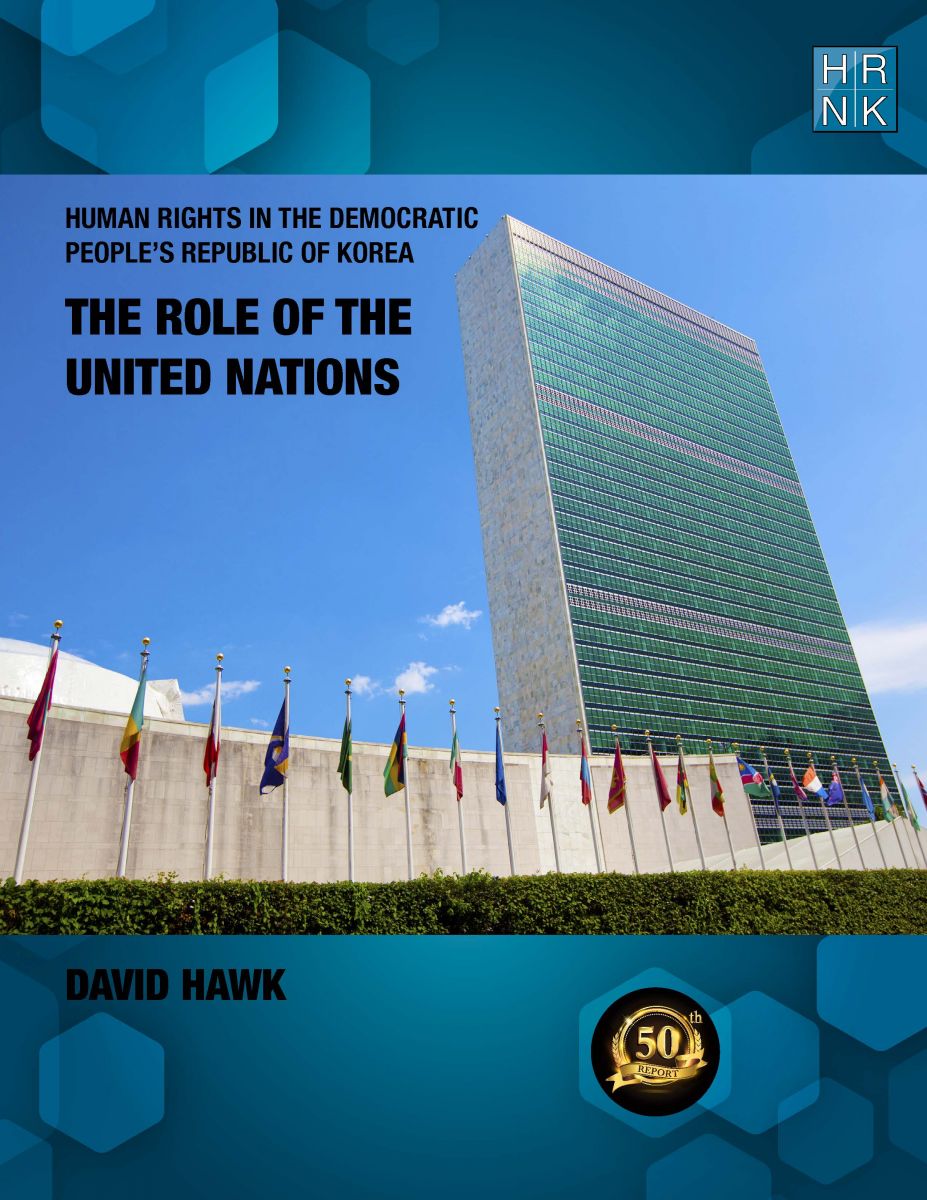
Human Rights in the Democratic Republic of Korea: The Role of the United Nations" is HRNK's 50th report in our 20-year history. This is even more meaningful as David Hawk's "Hidden Gulag" (2003) was the first report published by HRNK. In his latest report, Hawk details efforts by many UN member states and by the UN’s committees, projects and procedures to promote and protect human rights in the DPRK. The report highlights North Korea’s shifts in its approach
South Africa’s Apartheid and North Korea’s Songbun: Parallels in Crimes against Humanity by Robert Collins underlines similarities between two systematically, deliberately, and thoroughly discriminatory repressive systems. This project began with expert testimony Collins submitted as part of a joint investigation and documentation project scrutinizing human rights violations committed at North Korea’s short-term detention facilities, conducted by the Committee for Human Rights
